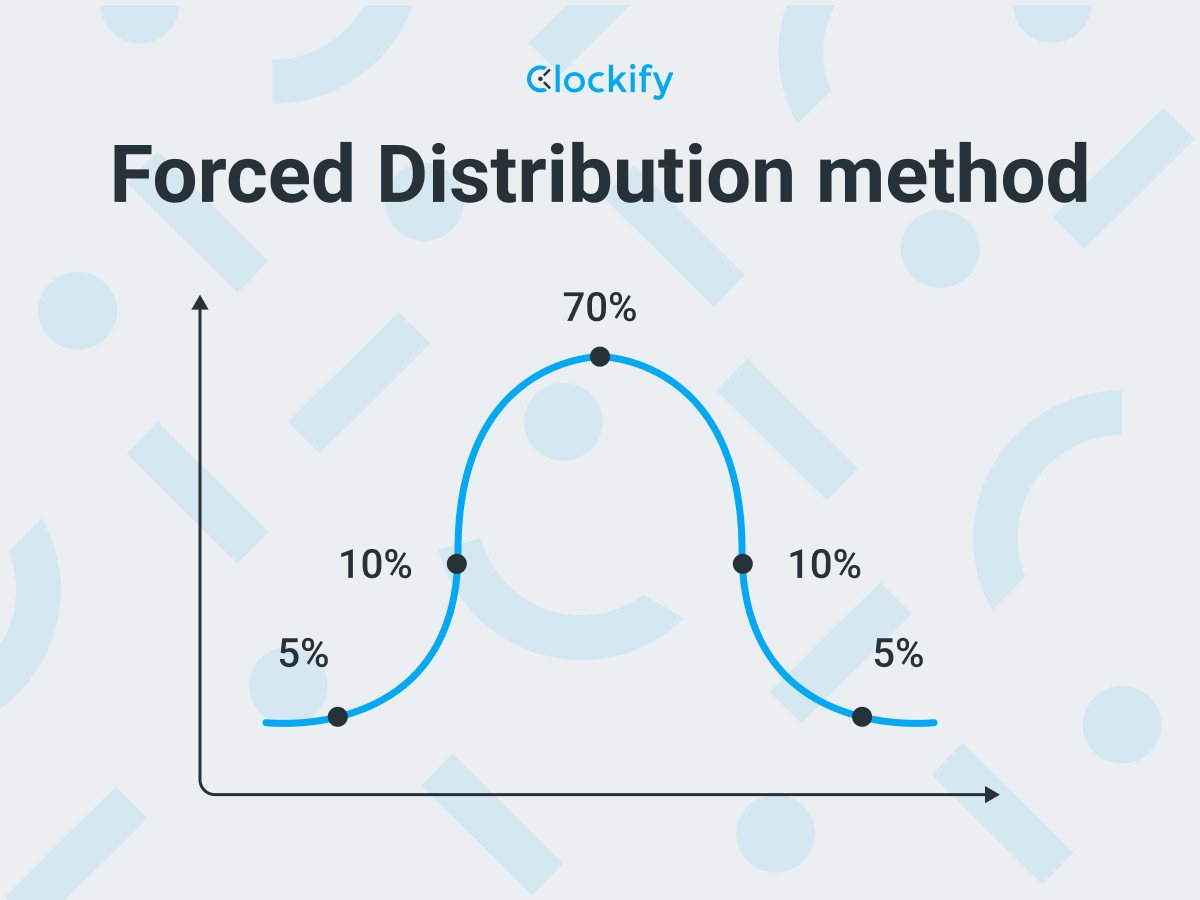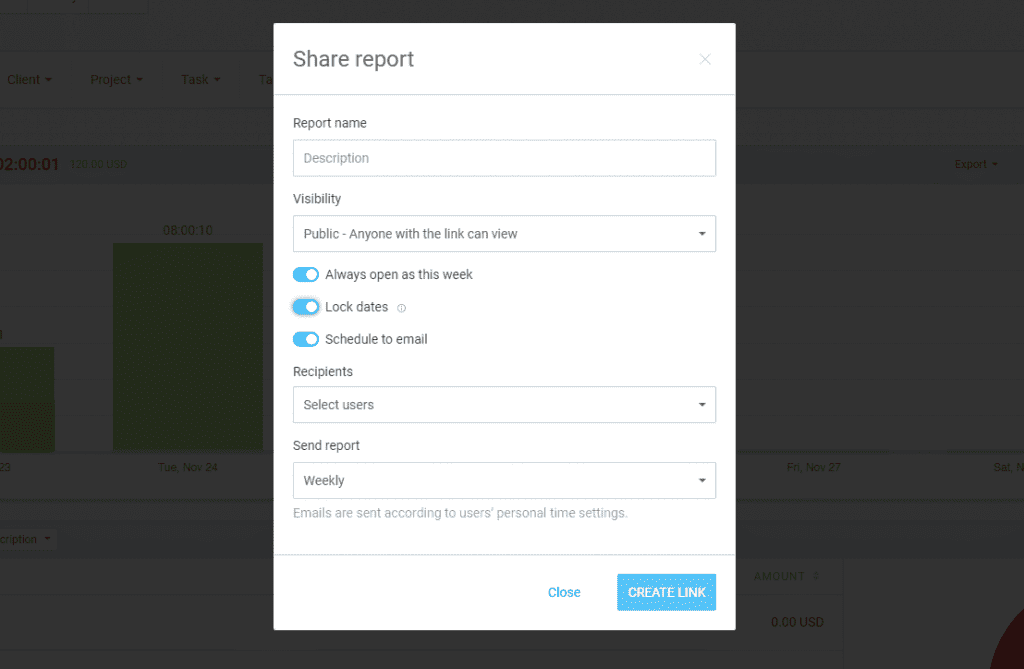”There is something that is much more scarce, something rarer than ability. It is the ability to recognise ability“ — Robert Half
This quote nicely sums up what performance review is all about. When done right, performance reviews allow you to recognize your team members’ abilities and identify areas for improvement.
But, if you’re saying performance reviews are challenging, we hear you. To help you out, we’ve created this comprehensive write-up.
In this article, you will learn:
- What performance review is all about,
- The different methods of performance review,
- The major steps involved in the performance review process, and
- Methods of evaluating yourself as an employee.

Table of Contents
What is a performance review?
Performance review (also called performance evaluation or appraisal) is a formal process of evaluating employees’ work performance, setting employees’ goals or targets, and providing suggestions for improvement. Managers use different methods of performance review for employee evaluation.
Apart from managers, the HR team, supervisors, psychologists, and employees can also be part of the performance review process.
During the performance review, managers evaluate both:
- Hard skills, such as technical skills, job knowledge, etc., and
- Soft skills, like communication or time management.
While the skills assessed differ based on the job role and the company’s goals, some of the commonly evaluated skills include:
- Job knowledge,
- Communication skills,
- Proactiveness,
- Willingness to learn and improve,
- Teamwork,
- Time and attendance,
- Accountability,
- Problem solving, and
- Culture and values.
In the next section, we will discuss different evaluation methods to help you make an informed decision.
The methods of a performance review
There are many methods of crafting a performance review. In this article, we’ll cover some of the most common performance review methods including:
- 360-degree feedback,
- Management By Objectives,
- Forced distribution,
- Behaviorally Anchored Rating Scale,
- Assessment center,
- Psychological review,
- 720-degree feedback, and
- Custom methods.
Here’s a quick summary of the features, pros, and cons of these methods:
| Method | How it works | Advantages | Disadvantages |
|---|---|---|---|
| The 360-degree feedback method | Gathers feedback about an employee from sources like peers, supervisors, customers, and suppliers | – An unbiased employee feedback – Improved teamwork – Discovering issues that may be the cause of an employee’s struggle | – Usually ineffective for small organizations – Requires more time to process data – Managers can’t get further information from the sources |
| Management by objectives | Compares employee’s accomplishments with the company’s determined objectives | – Employees have a clear understanding of their job duties – Transparency and hierarchy in the workplace – Promotes loyalty to the company | – Working conditions may sometimes cause performance failure – Lack of individuality, creativity, and proactivity |
| Forced distribution method | Distributes the company workforce into three categories: A, B, and C performers | – Consistent process of measuring employee performance – Reveals new leaders of the company – Easy to conduct | – Can cause unhealthy competition – Employees might feel that their performance is underrated, which affects trust between employers and employees |
| BARS method | Compares employee’s performance with the specific, predetermined example of behavior | – Transparent and concrete evaluation standards with specific examples of employee behavior – Employees have a clear pattern on how to be successful at work – Promotes employee equality | – Managers need a longer time to create suitable forms for reviews – Managers have to be trained for this method – Not practical for companies with diverse types of jobs |
| Assessment center method | Conducts a set of diverse exercises which simulate various components of the work environment | – Makes the selection process much easier and more accurate – The skills that employees show are indicators of their current and future performance | – Time-consuming since it requires planning and resources – Can be expensive because it involves professionals from numerous industries |
| Psychological reviews | Assesses the potential for future performance, by evaluating an employee’s personal characteristics | -Comprehensive data about employees, their skills, emotions, and personality types – Reveals new potential | – Time-taking and complex – Unpredictable factors may affect the results of the tests |
| The 720-degree feedback | Involves 2 rounds of reviews. In the pre-approach round, the manager provides feedback and training to the employee (if needed). In the post-approach period, the manager evaluates if the employee achieved these goals and provides further feedback. | – Employees receive guidance to set and achieve goals – Minimizes bias, discrimination, and subjectivity | – The review process is time-consuming – May require additional resources to complete 2 rounds of reviews – Not suitable for medium or small companies |
| Custom performance review methods | Google’s GRAD system involves ongoing feedback from managers with a focus onproviding learning and development opportunities.Microsoft uses both formal and informal check-ins and provides a platform for employees to share feedback with each other. | The following advantages apply to both Google’s and Microsoft’s review methods: – Less labor and not so time-consuming – Gives employees more control over the process – Focuses on employee collaboration, learning, and development | – Both methods are not suitable for smaller companies – There is a risk of more employees receiving low performance ratings in Google’s new review method – Managers need to be trained in providing both formal and informal feedback (applies to both review methods) |
Performance review method #1: 360-degree feedback
Unlike traditional performance appraisals, which typically involve feedback from a single supervisor or manager, the 360-degree appraisal collects feedback from multiple sources.
These sources are the individuals connected to the employee including:
- Colleagues,
- Clients,
- Vendors,
- Peers,
- Customers, and
- Supervisors.
As these individuals know a lot about the employee’s behavior and performance in the workplace, they are your source of information when you want to collect data about the employee.
However, during this process, the sources usually stay anonymous.
The survey provider Qualtrics suggests including several categories of employee evaluation you can analyze for this method, such as:
- Self-awareness,
- Communication,
- Leadership, and
- Teamwork.
For example, these are some of the questions that help evaluators assess an employee’s communication skills, according to Aleksandra Babic, Human Resources Generalist at CAKE.com:

“Does the employee effectively communicate with co-workers, managers, and customers? How often? How does the employee react to negative feedback? In what way could the employee contribute to better communication? Are they open to questions, suggestions, or proposals?”
The pros and cons of 360-degree feedback method
The benefits of the 360-degree feedback method are:
- It offers unbiased employee feedback since there are different sources of data, and
- It helps discover issues that may be the cause of an employee’s struggle.
In addition, studies have shown that using the 360-degree feedback method improves teamwork and communication.
On the other hand, here are the major drawbacks of this method:
- It’s not effective for small organizations where there are fewer sources (fewer managers, customers, etc), and
- It requires more time to process data from all sources.
According to Steve Lovig, HR Consultant at Flex HR, another disadvantage is that most people might hesitate to provide any negative feedback on the employee.

“Peers and others the employee works with are often hesitant to say anything negative since they “THINK” — whether true or not — that their input will impact the amount of increase other employees might be eligible for. People don’t want to keep others from getting an increase.”
Performance review method #2: Management By Objectives (MBO)
Peter Drucker, an Austrian-born American management consultant, introduced the term Management By Objectives in 1954. The goal of this method is to determine the company’s objectives and encourage employees to focus on fulfilling them.
Here are steps involved in the MBO process:
- The management defines or modifies the company’s goals,
- Employees set individual goals with the help of their managers,
- Managers evaluate employees’ performance by comparing it against the company’s objectives, and
- Continuous feedback from managers helps employees achieve their goals.
When employees show excellent results, they get rewarded with promotion or a raise. If employees have unproductive results, they will receive further training.
For the MBO method to be effective, companies need to have fixed goals that are aligned with the SMART goals. So, companies should have aims that are:
- S — specific,
- M — measurable,
- A — achievable,
- R — realistic, and
- T — time-sensitive.
The pros and cons of the MBO method
Here are the major advantages of the MBO method:
- It provides employees with a clear understanding of their job duties,
- It promotes transparency and hierarchy in the workplace,
- It encourages employees to contribute to the company’s success, and
- It promotes workers’ loyalty to the company.
However, there are some downsides of the MBO method:
- It can sometimes cause performance failure due to factors beyond employee’s control, such as availability of resources or a toxic work culture,
- It can make employees feel like machines, not individuals as they are expected to work their way towards the set goals, no matter what, and
- It leads to lack of creativity and proactivity as workers are bound to follow fixed objectives.
💡 Clockify Pro Tip
Want to know how to survive and thrive in a toxic workplace? Check out this blog for some insightful tips:
Performance review method #3: Forced distribution
In the Forced distribution method (or Forced ranking method), evaluators classify employees into 3 categories:
- Top,
- Poor, and
- Average performers.
Instead of using predetermined performance criteria, managers compare an employee’s performance to that of their co-workers.
Here’s how this method works — a manager, a supervisor, or a director evaluates each employee in categories, such as:
- Quality of work,
- Knowledge,
- Attitude,
- Dependability, and
- Cooperation.
Based on how they perform, employees can be classified into 3 groups, and this type of distribution is called the 20-70-10 formula:
- 20% of employees are A performers (the top performers),
- 70% of employees are B performers (average performers), and
- 10% of employees are C performers (extremely low levels of performance).
When you plot this as a graph, you will get a bell-shaped curve like this:

As you can see, the middle of this bell-shaped curve represents average performers (70% of employees fall into this category). The two ends of the curve represent the top performers (10% on each side of the curve) and the poor performers (5% on each side of the curve).
The pros and cons of the Forced distribution method
Here are the positive aspects of the Forced distribution method:
- It maintains consistency in measuring employee performance, regardless of the number of workers in the company,
- It reveals new leaders of the company — once the A performers are discovered, the company management can start training such employees for their future leadership roles, and
- It’s easy to conduct such reviews because the process is the same for all employees.
Nevertheless, the Forced distribution method has several disadvantages as well:
- It can cause unhealthy competition and conflicts between employees,
- Employees might feel that their performance is underrated, especially if they end up in the C category, and
- Many HR specialists consider the Forced distribution method unsuitable, because some organizations use it when they need to downsize.
Another downside of the Forced distribution method is the fact that it does not consider the true performance of employees and can demoralize them, according to Steve Lovig.

“The Forced distribution method forces managers to rate a certain percentage of employees as top performers, a larger percentage as average, and a certain percentage as not meeting expectations, regardless of the true performance of the employees. Many may feel the system is unfair; they are being categorized as ‘not meeting’ due to the ‘curve’ (forced ranking), instead of their actual performance.”
Performance review method #4: Behaviorally Anchored Rating Scale (BARS)
The Behaviorally Anchored Rating Scale (BARS) method evaluates employee performance by tying it to specific behaviors at the workplace (such as attentive customer service in the customer support field).
The purpose of this method is to compare the employee’s performance and predetermined examples of behavior (how a certain employee should behave). As each job has its own set of specific behaviors that are indicative of their job performance, managers can evaluate employees’ performance accurately.
Here’s an example of how a company defines the desired examples of behavior. Let’s say that you’re a manager of a coffee shop, and you need to evaluate your employees working at the counter. Their main duties are greeting the customers, taking orders, and handling payments.
Therefore, you can evaluate your workers in the following categories:
- Customer service,
- Attendance,
- Effectiveness,
- Responsibility, and others.
When it comes to customer service, at the top of your scale should be examples of exceptional employee behavior. For instance, smiling while greeting new customers and using phrases such as:
- Welcome to “XX coffee shop.”
- Can I take your order?
In other words, being polite and friendly to customers, as well as creating a positive atmosphere are some examples of desired employee behaviors. At the bottom of your scale should be examples of unprofessional, unacceptable employee behavior. For instance, being rude and impolite to customers, talking on the phone while taking orders, and not making eye contact with them.
💡 Clockify Pro Tip
Discover the art of managing emotions at work and excel at interpersonal relationships. Check out our blog:
The pros and cons of the BARS method
These are the advantages of the BARS method:
- It provides transparent and concrete evaluation norms with specific examples of employee behavior,
- It offers a clear framework for employees on how to be successful in the workplace, and
- It promotes equality as the performance of each worker is measured the same way.
Then again, there are some drawbacks of the BARS method, too:
- It takes a long time to create different rating scales for various job roles,
- It requires managers to be trained in areas, such as interpersonal skills, goal-setting, or providing constructive feedback, and
- It’s not practical for companies with diverse types of jobs.
Performance review method #5: Assessment center
The assessment center method focuses on creating diverse exercises which simulate various components of the work environment.
The idea behind this technique is to see how employees behave in particular situations at work and how these situations affect their performance.
This method is handy when the company’s management needs to make decisions about promotions and training needs of employees.
Aside from this, the assessment center method is used during the recruitment process to identify talent.
💡 Clockify Pro Tip
If you’re looking for some handy HR software to manage your recruitment tasks, check out our selections.
Here are the different types of exercises evaluators use:
- In-tray exercise: The goal of this exercise is to measure job skills of candidates by giving them tasks that mimic real-world work situations.
- Presentation exercise: Candidates receive a topic in advance on which they have to give a presentation.
- Group discussion exercise: A group of 4 to 8 candidates work together to solve a physical or theoretical problem.
- Competency-based interview: Candidates describe a situation in which they have shown qualities such as leadership, teamwork, etc.
- Role-play exercise: Candidates are asked to imagine themselves in a hypothetical position, for instance, as the CEO of a company. Then, they should explain how they would manage working as a CEO.
There are many professionals involved in the assessment process, including employers, supervisors, HR personnel, consultants, or professional actors.
The pros and cons of the assessment center method
Here are the positive aspects of the assessment center method:
- The data gathered from these exercises makes the selection process much easier and more accurate.
- The skills that employees show during the evaluation process are the true indicators of their current and future performance.
- Ideal for companies that need to recruit a large number of employees or for hiring candidates remotely.
And, here are the negative aspects of this method:
- Time-consuming as it requires considerable planning.
- Can be expensive because it involves professionals from numerous industries.
- May not be suitable for all job roles.
Performance review method #6: Psychological review
In this performance review method, psychologists perform diverse tests, namely in-depth interviews, psychological tests, and private discussions. By reviewing the results of these tests, psychologists can predict an employee’s future performance.
Qualified psychologists evaluate the main elements of an employee’s work, which are:
- Interpersonal skills,
- Cognitive abilities,
- Intellectual traits,
- Leadership skills,
- Personality traits, and
- Emotional factors.
The tests show how well an employee is suited for a position and helps the management make informed promotion decisions. For example, the psychologist assesses how an employee handles an aggressive customer and other challenging customer-facing situations. Based on the assessment, the management promotes the employee as a customer service team lead.
The pros and cons of the psychological review
The benefits of using the psychological review method are:
- It provides comprehensive data about employees, all their current skills, emotions, and personality type, and
- It reveals new potentials as psychologists can find out some undiscovered employee qualities. Furthermore, this discovery may bring new possibilities for an employee.
The limitations of the psychological review method are:
- Time-consuming and can be quite a complex process due to the necessity for multiple tests and in-depth interviews, and
- Unpredictable factors may affect the results of the tests. For example, if an employee was nervous during the assessment, the results might be irregular.
While we discussed some of the commonly used methods, many organizations are shifting to other performance review methods that better align with their culture, goals, and the changing expectations of their workforce.
Let’s look at some of these modern performance review methods.
Performance review method #7: 720-degree review
As you might’ve guessed, the 720-degree review is nothing but the 360-degree done twice over.
In the 720-degree performance review method, there are 2 rounds of feedback:
- In the pre-approach round, the employee gets feedback and suggestions on setting and achieving goals from multiple sources (management, customers, subordinates, etc). The management can also provide training as needed to help the employee achieve the goals, and
- In the post-approach period, the manager evaluates if the employee achieved these goals and provides further feedback as required.
The pros and cons of the 720-degree review method
Here are the advantages of the 720-degree review method:
- It takes a proactive approach to bring out the best in employees,
- It minimizes bias, discrimination, and subjectivity in review, and
- Employees receive guidance to set and achieve goals, reducing the chances of errors.
As with other methods, the 720-degree employee evaluation method also has disadvantages:
- It takes a lot of time to implement the review process, making it unsuitable for companies with time constraints,
- It may require additional funding to carry out 2 rounds of reviews,
- It’s not suitable for medium or small companies, and
- With multiple people involved in the performance evaluation, the results may not be accurate.
Performance review method #8: Custom performance review
As the name suggests, each company can develop their own method of performance review to align with their goals and workers’ needs.
For instance, Google developed a new system of review called Google Reviews and Development (GRAD) in 2022 based on their employees’ feedback.
The features of the GRAD system are:
- Managers regularly provide feedback and check-in with employees to ensure the workers are on track when it comes to the most important tasks,
- One of these feedback sessions focuses on discussing the learning and development opportunities at the company, and
- Employees are evaluated with a 5-point rating system where the lowest rating is “not enough impact,” and the highest rating being “transformative impact.”
As the rating is done just once a year, the process is less time consuming and requires less labor commitment compared to some of the other methods.
Microsoft, on the other hand, uses informal check-ins and annual employee surveys to gather feedback. Employees can also ask for feedback from any other employee or peer whose input is relevant. In addition, employees use performance journals to record their own work-related activities, goals, and achievements.
The pros and cons of custom review methods
Although it is difficult to generalize the pros and cons of custom methods, here are some of the advantages of the methods used by Google and Microsoft:
- Less labor and less time-consuming as there is no rigid structure for performance review,
- Gives employees more control over the process, and
- Focuses on employee collaboration, learning, and development.
These are some of the drawbacks of Google’s and Microsoft’s appraisal systems:
- Not suitable for smaller companies with fewer employees, managers, customers, vendors, etc,
- With employees at Google expected to accomplish ‘the near-impossible’, there is a risk of more workers receiving low-performance ratings, and
- Managers need to be trained in conducting both formal and informal check-ins.
💡 Clockify Pro Tip
Learn how you can enhance the performance levels within your organization with the Workforce Management process:
Performance review: Can you use more than one method?
So far, we have listed 8 performance review techniques. But, note that some companies may use a combination of these methods.
In fact, a combination of methods helps retain objectivity, according to Aleksandra Babic.

“Our company uses the 360-degree feedback method and the assessment center method. From our point of view, these two methods have proven to be the most objective when it comes to assessing work performance. The data obtained from these methods are easy to process and directly represent our expectations as an employer and can easily be compared with what the employee actually did and what the quality of the work was.”
And, according to experienced recruiter and Director of Health Recruiters, Daniel Evans, a hybrid approach helps improve employee performance.

“We utilize a combination of 360-degree feedback and MBO. This hybrid approach fosters a well-rounded evaluation, aligning individual goals with overall organizational objectives. This method has proven effective in enhancing employee performance and development.”
Now that you know more about the different performance review methods, it’s time to focus on how to create an effective appraisal system.
The major steps of creating a performance review
Here are the steps that help you ensure your performance reviews bring the results you desire.
Step #1: Determine the company’s goals and training needs
Before creating a performance review, it is important to establish the company’s goals and assess the evaluator’s skills, according to Aleksandra Babic.

“It is necessary to define what the company’s goals are, as in, what we want to achieve with the employees. Should we motivate them more? Do we want them to work better? Or to be faster? The second thing to take care of is what way the staff will be evaluated and whether the evaluators are sufficiently trained for that.”
Step #2: Create a file for each employee
Remember that documentation is vital to improving accuracy of your reviews.
Shari Harley, a business communication keynote speaker explains how to review employees in one of her video guides.
Shari points out that managers should create a separate document that contains essential information (such as positive feedback from clients or projects completed) about each employee. In addition, managers should gather feedback on the employee’s performance from vendors, customers, peers, and colleagues.
To ensure they have complete information, managers should ask employees to keep a record of their accomplishments, too.
Step #3: Be detailed
In the aforementioned guide, Shari stressed out how performance reviews need to be detailed. Thus, managers should think about:
- 3 Most important cases when an employee has performed exceptionally well, and
- 3 Most important situations that an employee should have done differently.
Therefore, employees will know exactly what they’re doing great and what they should improve.
Step #4: Be specific
When it comes to providing feedback, specificity is a key. The same rule applies to performance reviews.
So, as suggested by Shari, be specific when writing down 3 accomplishments and struggles. That way, your employees will have a clear understanding of their performance.
Instead of saying “produce more accurate work” to your employee, Shari suggests you use these phrases:
- “Check your work,
- Be sure to spell check, and
- Have someone proofread your work before you turn it in.”
Besides, remember that every review should be about the employee’s previous performance, and future plans, as well.
Step #5: Train evaluators and ensure ongoing communication
According to Scott Jackson, keynote speaker and area manager at Amazon Global Specialty Fulfillment, companies should focus on ongoing communication and training to ensure the performance review process is effective.

“Train evaluators rigorously — they are the analysts of your human capital. Communicate clearly, provide consistent feedback, and adapt like a startup in a dynamic market. It’s a continuous improvement cycle — stay agile.”
You should always keep these steps in your mind, regardless of the method you’ll use for performance reviews.
Tips for evaluating yourself as an employee
The self-review (also known as self-evaluation or self-appraisal) is a process where employees rate their own performance. These reviews are beneficial because managers can compare their own opinions about the performance of a worker with what the employee points out in the review.
What’s more, many companies prioritize employee self-evaluation as they believe it encourages workers to take ownership of their performance, according to Wendy Makinson, HR manager at Joloda Hydraroll.

“We allow time to be put aside to prepare before review meetings and expect everyone to reflect on progress, suggest their own areas for improvement, and make suggestions for their personal goals. Our culture is one encouraging employees to take personal responsibility for their performance with support and advice from their manager, rather than one where the manager is responsible for setting goals.”
If you’re an employee who has never written a self-performance review, here are some tips for you.
Tip #1: Think about your past performance
Start by reflecting on your performance in the past period, for example, past year. Then, find the answers to these questions:
- What tasks, actions, or activities went well over the past period?
- What tasks were marked as unsuccessful?
- What should be done differently in the future?
Try to be as realistic as possible. Avoid sugar-coating your activities or underestimating your past efforts.
Tip #2: Keep track of your accomplishments and challenges
According to Jackson, effective self-evaluation begins with recording achievements using metrics.

“For the workforce, it’s about metrics, metrics, metrics. Use quantifiable measures to assess your own performance.”
Depending on the nature of your job, these metrics can include new customers acquired or revenue generated in a month, etc.
As suggested by Shari, you can create a “me file” which is a compilation of all your achievements.
This file should contain all the positive feedback that you received, emails of review, your successful tasks, etc.
Think about your role within the team and how your contributions play a significant part in the team’s success.
Try to be as specific as you can when writing about your accomplishments. For example, if you’re in sales, note that you’ve managed to sign contracts with 10 new clients, which is a 20% increase compared to the previous period.
Nevertheless, including all the challenges you’ve had over the last few months is also important. Be sure to explain why particular tasks were more demanding for you, so that your manager can help you resolve these issues in the future.
Tip #3: Include your future goals and plans
To show your proactivity, include your future goals in your review. But, include only goals that are possible to achieve, depending on your position, skills, and experience.
For example, an achievable goal can be:
Attend workshops to improve time management skills and reduce the number of overdue tasks by [X]% in the next quarter.
In addition, if there’s any way your manager can help you enhance your skills and gain new knowledge, don’t be afraid to ask. It can be a training session, a conference, or an online workshop dedicated to the topic you’re interested in.
💡 Clockify Pro Tip
Seize control of your career and life trajectory by mastering the art of being proactive. Explore actionable tips in this blog post:
Tip #4: Proofread before sending your review
Once you’ve finished writing your self-review report, be sure to carefully review it before sending it to your manager. Remember to spell check it and make edits if needed. Having typos and grammatical errors is not acceptable.
Furthermore, you should have your colleague, a friend, or a family member proofread the review. It’s likely that they’ll notice an error that you’ve missed, or they’ll point out if your tone wasn’t appropriate.
Conduct thorough performance reviews — with Clockify
To make your performance reviews as accurate and credible as possible, you need more than methods.
You need a systematic approach.
With Clockify, you can use detailed reports, activity levels, and project tracking to gain insights into employees’ work habits and areas for improvement.
For example, team scheduling allows you to do all of that by:
- Creating assignments,
- Publishing assignments,
- Managing workforce capacity.
Here’s what it looks like in Clockify’s team tab when you’ve assigned all the tasks and projects to your team members:

This allows you to get credible data on what your team is up to and what awaits them task-wise in the near future.
When you’re done tracking and allocating your team’s work hours, you can schedule reports with time log insights to be sent to your — or someone else’s inbox.
This is how you do it:
- Visit any report,
- Apply filters you want the report to have,
- Pick a relative date range (like Last Month),
- Select the Share option,
- Give the report a name,
- Pick recipients,
- Choose how often you want to get the report (monthly, weekly, or daily),
- Click Create link.

And voila — you have your report ready for your next performance review. That way, you’ll get objective assessments of your employees’ effectiveness and efficiency, paving the path to growth or reward.
Using Clockify saves time and resources — simplifying your performance review process and making it less time-consuming and more efficient.
Take your first step toward meaningful performance reviews and reward your employees based on objective data.


